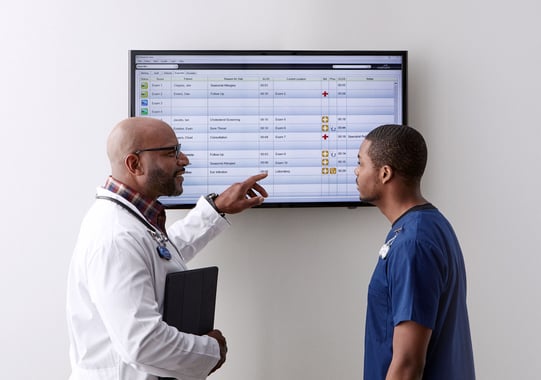Next-generation Real-Time Location System (RTLS) technologies are as transformative to hospitals as Uber is to personal transportation. Odd analogy? Just hear us out...

Consider how dependent we are on GPS technology in our cars and on our phones to find where we are going, what and who is in our immediate vicinity, and how this has changed our own every-day workflow. Now consider RTLS as an indoor GPS, delivering the same promise to healthcare organizations seeking to locate patients, staff and equipment more efficiently.
Hospitals that have implemented the latest RTLS technology have seen reduced time spent searching for key assets and people. The data gathered through this technology is helping clinical management identify operational bottlenecks and staffing inefficiencies. This is made possible through precise location data delivered at rapid speeds. The precision is determined by segmenting spaces into clinical zones, such as patient rooms, beds, bays, nursing stations and other relevant areas. With a multitude of integration capabilities, today's upgraded RTLS solutions can also be plugged into security system functionality.
With these advancements, it's no longer a question of "when" you need to upgrade your RTLS technology, but "why" you need to consider it.
Here's a look at some of the challenges this new technology is working to overcome:
1. Operations: Never before have hospitals been able to speed-up and simplify the process of locating the right equipment, provider, or patient from any of a hundred different hospital applications (such as electronic health record systems, nurse call, or security systems). By reducing the time it would traditionally take to search for key assets and people, hospitals can return that time to focusing on patient care, and reduce patient wait times.
2. Costs: RTLS minimizes the rate of lost or stolen items, as everything is tracked. This allows hospitals to reduce annual rental expenses and increase their utilization of existing equipment. Considering the greater financial risk for spending in hospitals, this further supports how integral an updated solution is to the success of facility operations.
3. Profits: RTLS helps the hospital increase the number of revenue-enhancing procedures, such as surgeries, by automating patient flow. This means that the technology provides time-specific data, such as case status, milestones, patient location, and work queues. By keeping up with schedules, you are optimizing the workflow, and leading to greater efficiencies for patients and staff alike.
4. Security: Ensure security compliance. Secure RTLS solutions allow for full transparency of patients and staff, keeping track of where everyone is and what exactly they are doing. With staff duress notification capabilities, RTLS enables immediate response when your team needs a hand. Protect your facility against potential liability risks with patient tagging for all ages, from infants to elders. If an at-risk patient is tagged, the system provides instant location confirmation. RTLS can automate inputs and simplify the operations of an EHR, which reduces user-time and improves data integrity to keep your facility's security priority number one.
Relating back to our analogy, RTLS really can be considered the Uber of hospitals. Where Uber eliminates the uncertainty of personal transportation, RTLS eliminates the unnecessary time spent searching, calling, and paging to locate people and equipment - all while tracking key metrics to analyze workflows and optimize patient care.
Are you considering an RTLS upgrade? Click to download our
8 Things to Consider When Upgrading Your RTLS Solution content offer!




